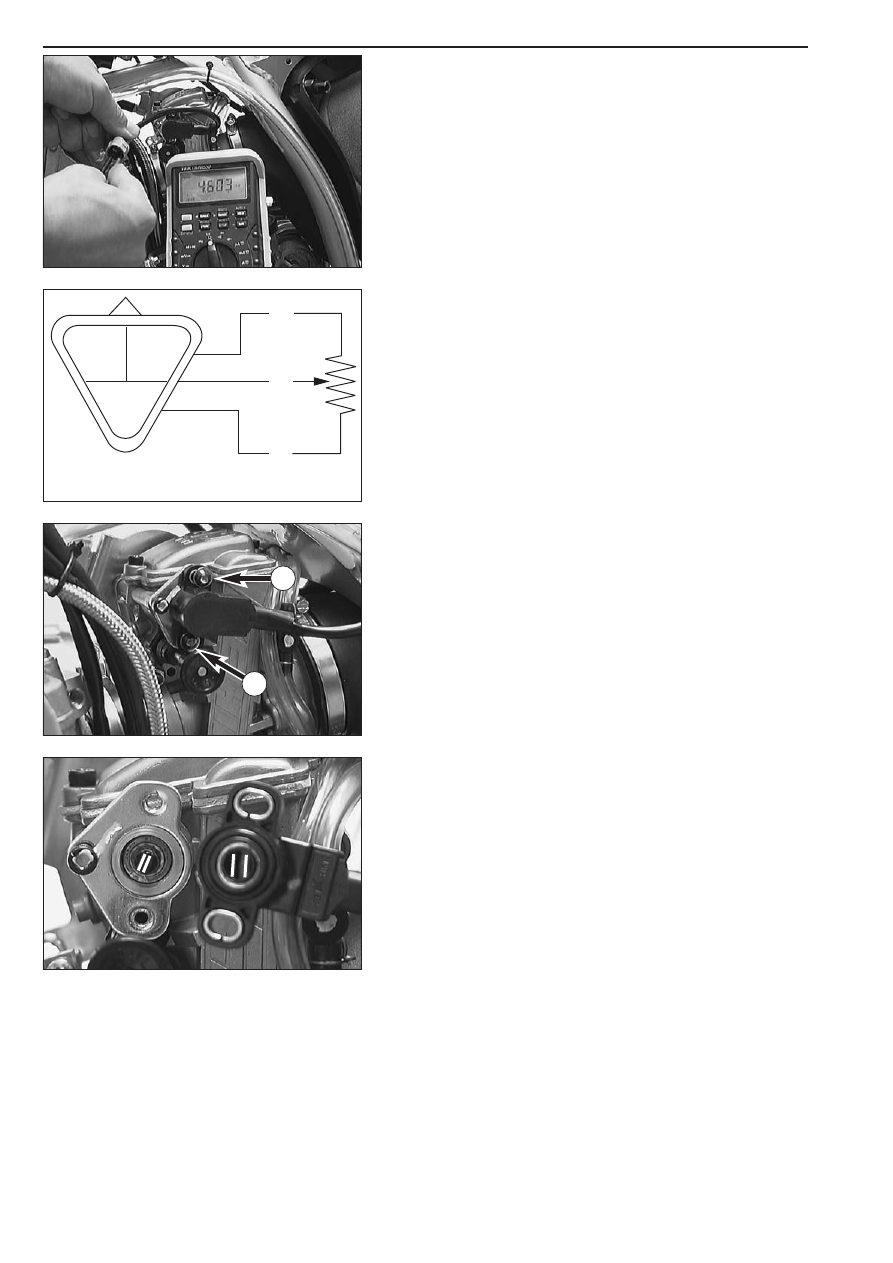KTM LC4 400-660LC42003 engine. Manual - part 24

8-48D
Checking the throttle valve sensor
NOTE: The following measurement must be taken at a component
temperature of approx. 20°C.
– Open the plug-and-socket connection of the throttle valve sensor.
– Connect a multimeter (measuring range Ω x 1k) to the blue (+) and
the black (-) cable of the throttle valve sensor.
Resistance of throttle valve sensor: 4 - 6 kΩ
– Now, connect the multimeter to the yellow (+) and the black (-)
cable of the throttle valve sensor.
– As you open the throttle grip slowly, the resistance must change
evenly.
Resistance of throttle valve sensor: 0-5 kΩ ±1 kΩ
(while opening the throttle grip)
Dismounting and installing the throttle valve sensor
– Disconnect the plug-and-socket connection of the throttle valve
sensor and remove the bolts
1
.
– Take the throttle valve sensor off the carburetor.
– When mounting the throttle valve sensor, make sure that the flat
spot at the throttle valve pin engages the groove on the throttle
valve sensor.
– Mount the 2 bolts, however, do not yet tighten them fully and adjust
the position of the throttle valve sensor. Secure the 2 bolts with
Loctite 243.
bl
bl
ge
ge
s
s
bl = blue
ge = yellow
s = black
1
1